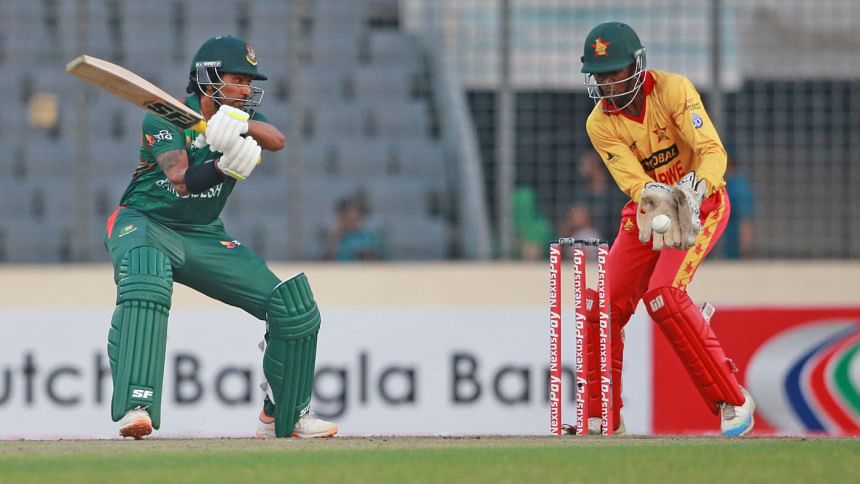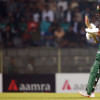‘Type of cricket’ biggest concern for Tigers

There was a lot of scepticism regarding Bangladesh's home T20I series against Zimbabwe, especially with it being viewed as an opportunity for the Tigers to gauge their mettle before leaving for the USA and the West Indies for the ICC T20 World Cup in June.
Questions were raised as to what good can come of playing a five-match T20I series against a side that could not make it to the mega event, losing to Uganda and Namibia in the qualifiers in November last year.
The scepticism and queries over the team's preparation were not at all surprising, considering how poorly the Tigers have fared in the last two T20 World Cups -- only winning over low-ranked Netherlands and Zimbabwe in 2022 while suffering a humiliating loss to Scotland the year before in the previous edition.
But once the series started, there remained no point in mulling over what opposition the team was lining up against -- especially for the players. Then, it became a matter of how well the given opportunity could be utilised to tune up in the best possible way for the T20 World Cup as it boils down to what type of cricket the team is trying to play and with what approach.
"More important than winning or the opponent we are winning against is what type of cricket we are playing and how much we can improve from here on," Soumya Sarkar, who scored a 34-ball 41 despite some initial jitters in Bangladesh's slender win in the fourth T20I in Mirpur yesterday, said after the game.
Soumya, however, also mentioned that it is important to develop a "winning habit" going into a World Cup -- a notion that backfired for Bangladesh in the 2021 ICC T20 World Cup where home series wins over Australia and New Zealand before the tournament did little for the team in the actual event.
Soumya's initial comment about the "type of cricket" sounded logical and appropriate but when analysing the four T20Is played so far this series, there are nothing but worrying signs to take away for the Tigers.
The eight-wicket win in the first match conceals how Clive Madande and Wellington Masakadza staged a record eighth-wicket stand for Zimbabwe, and the second-best in T20Is overall, to undo the brilliant initial effort from Bangladesh bowlers that had reduced the visitors to 41 for seven, threatening of setting the record for the lowest-ever collection by the Zimbabweans.
The second T20I was about how the bowlers sort of repeated the script from the first game -- taking wickets initially but letting Zimbabwe's lower-order batters flourish and put up a mediocre score -- and the top-order batters coming up with dialed down performances as the Tigers' middle-order had to come in rescue to complete a regulation 139-run chase.
Meanwhile, things got alarmingly close in the last two T20Is, with Bangladesh prevailing by nine runs in the third match and by just five runs in the fourth one on Friday.
In the last match, Bangladesh's heavily unsteady batting line-up was exposed. In a rare instance, the fresh opening pair of Soumya, replacing out-of-form Liton Das, and Tanzid Tamim managed to put up a 101-run opening stand at a brisk pace. But instead of capitalising on the start and converting it to a daunting total, Bangladesh lost their last nine wickets for just 42 runs and were bundled out for 143.
This only proves that at times when even scores north of 270 are a probability -- considering how things are unfolding in the ongoing Indian Premier League -- Bangladesh batters' threshold remains what was the norm about a decade ago in the shortest format.
While Soumya's remarks on focusing on "type of cricket" might have sounded good, the cricket put on display by the Tigers would only add to the worries ahead of the T20 mega event. And the eight-wicket defeat in the final T20I against Zimbabwe on Sunday only compounded those worries.

 For all latest news, follow The Daily Star's Google News channel.
For all latest news, follow The Daily Star's Google News channel. 








Comments